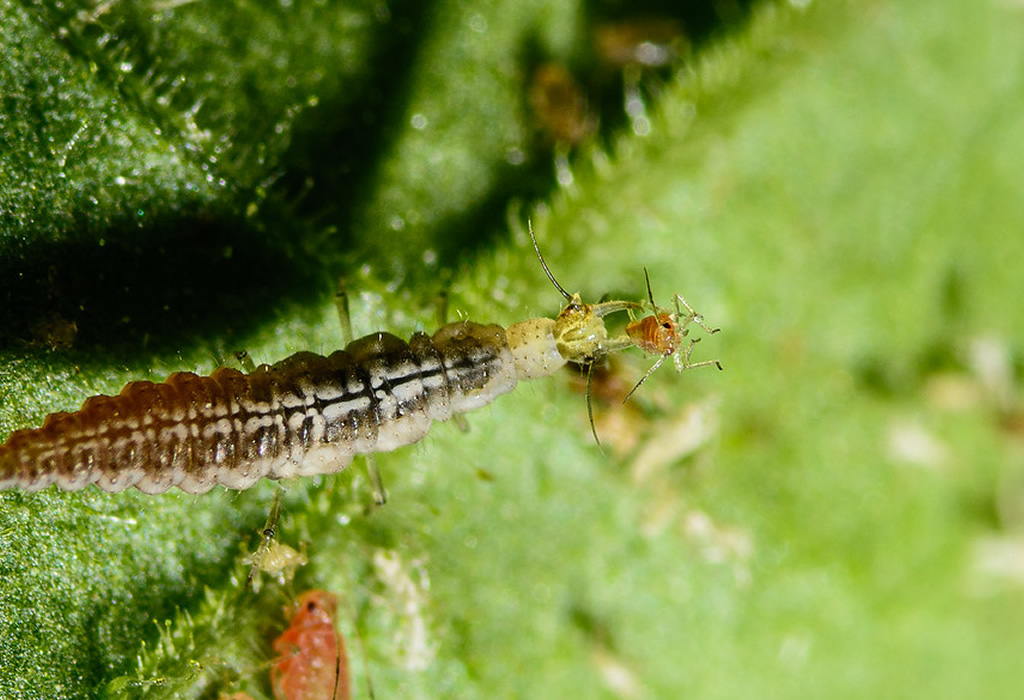
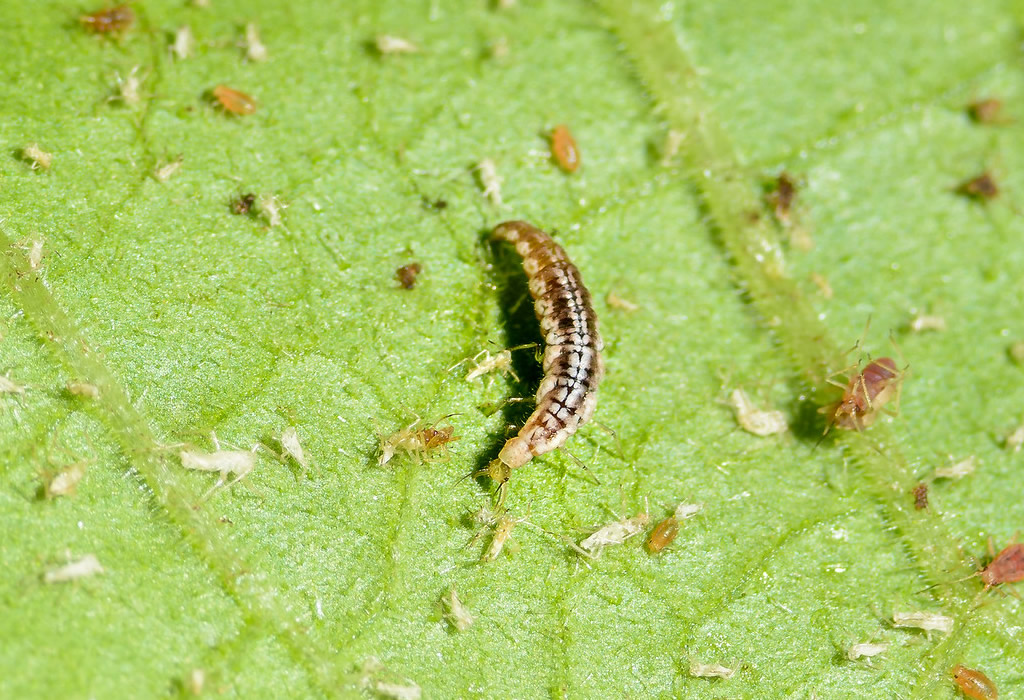
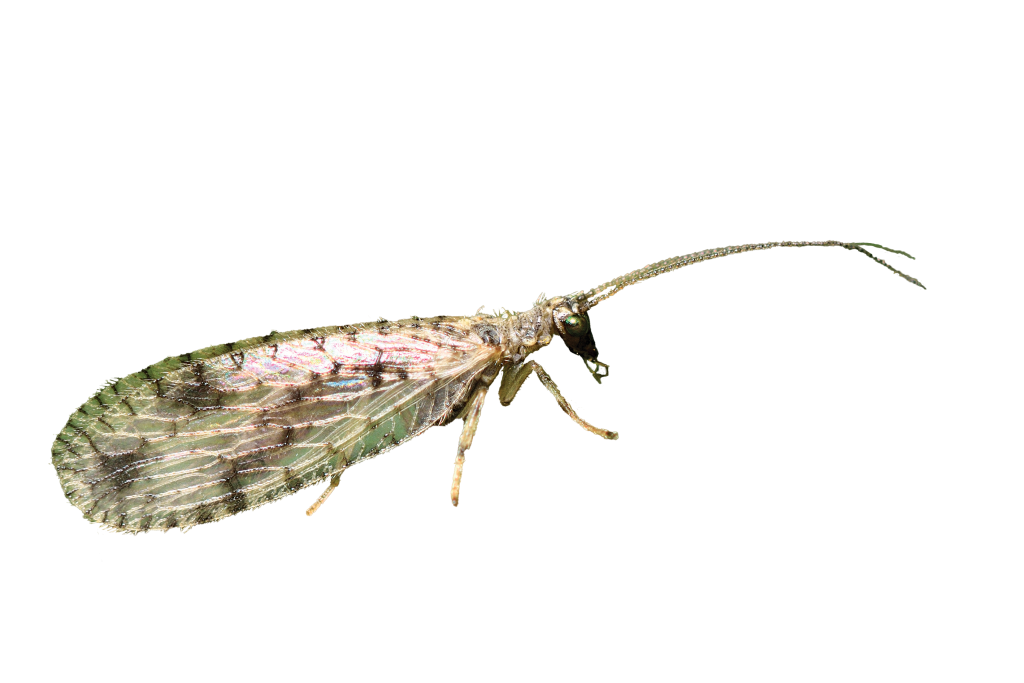


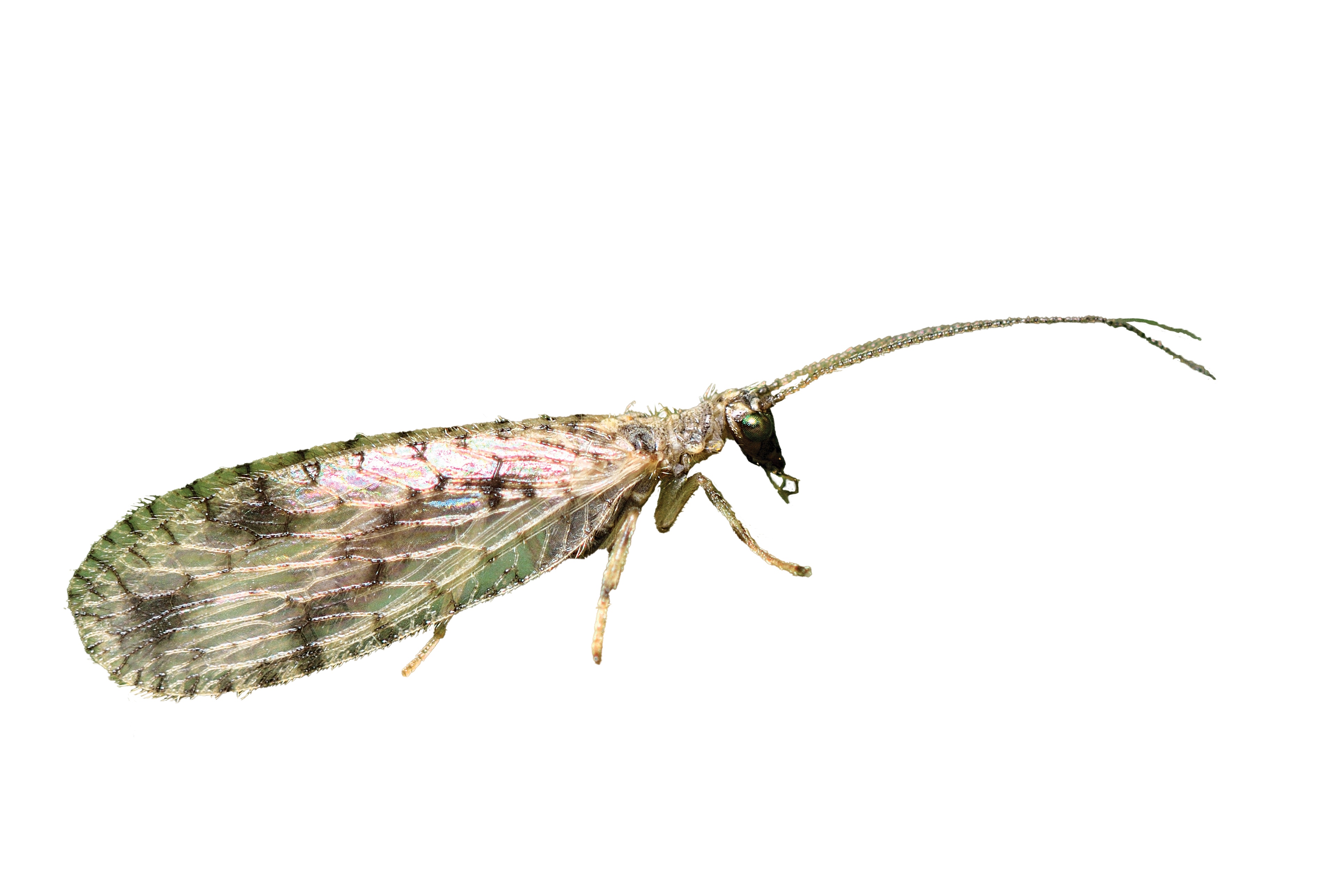
Micromus variegatus
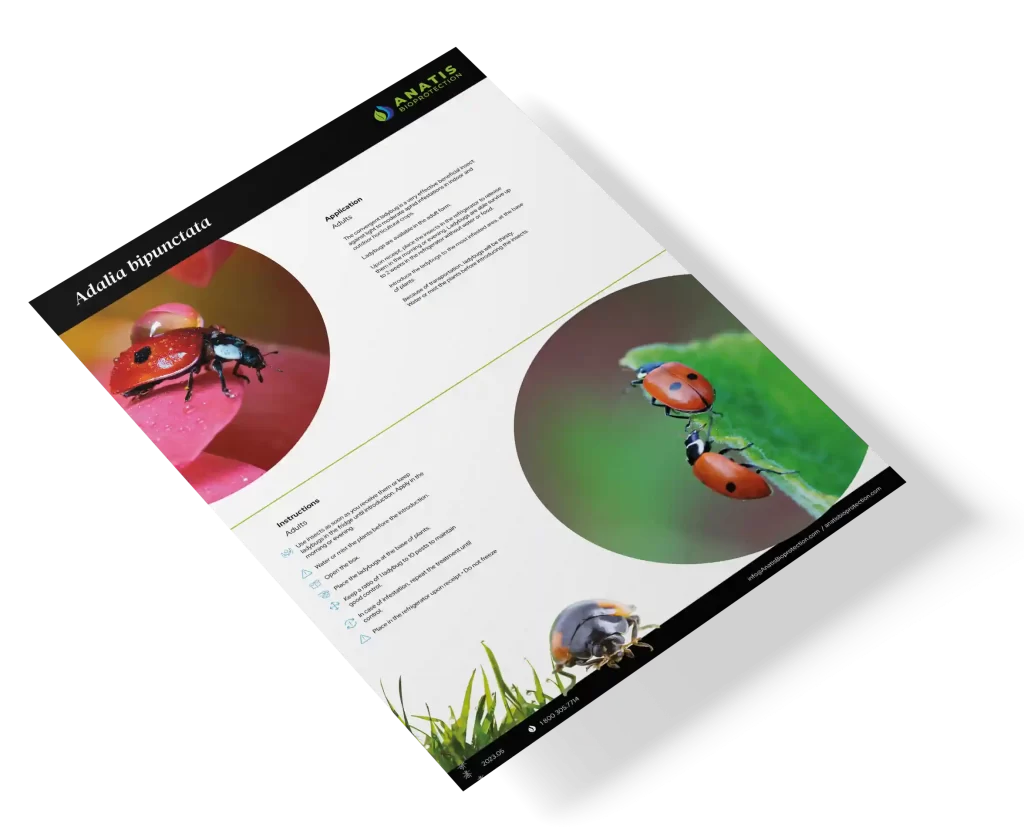

Technical sheet
DOWNLOAD IT NOW!Get easy access to all the information on this product by consulting its technical data sheet.
Product description


Targeted crops
- Celery
- Cruciferous vegetables
- Cucumbers
- Grapes
- Lettuce
- Orchards
- Ornamentals
- Peppers
- Potatoes
- Raspberries
- Strawberries
- Tomatoes
- Trees Bushes and shrubs
- Rose bushes
- Apple trees, etc.)

Targeted pests
- Aphids
- Spidermites
- Thrips
- Whiteflies

Application Instructions
By the time the Brown Lacewings arrive, they will be ready to release. It is recommended to find an area low in the canopy of the crop, off the ground so it is protected, and simply remove the lid from the container. You can remove of loosen some of the carrier material to help the adults emerge from the bottle.
Adults are most active at night. To improve dispersion and efficacy reduce fans speeds at night, if possible. This ensures little to no wind, so winged biologicals can get around with ease.

Storage Instructions
Use upon reception. (A mortality rate of less than 10% is normal).
Do not freeze.
Do not refrigerate.
This beneficial insect thrives in temperatures ranging from 15°C to 26°C, with 30% or higher relative humidity. It’s well-adapted for varying conditions and also capable of surviving at extremes up to 4°C and 31°C.
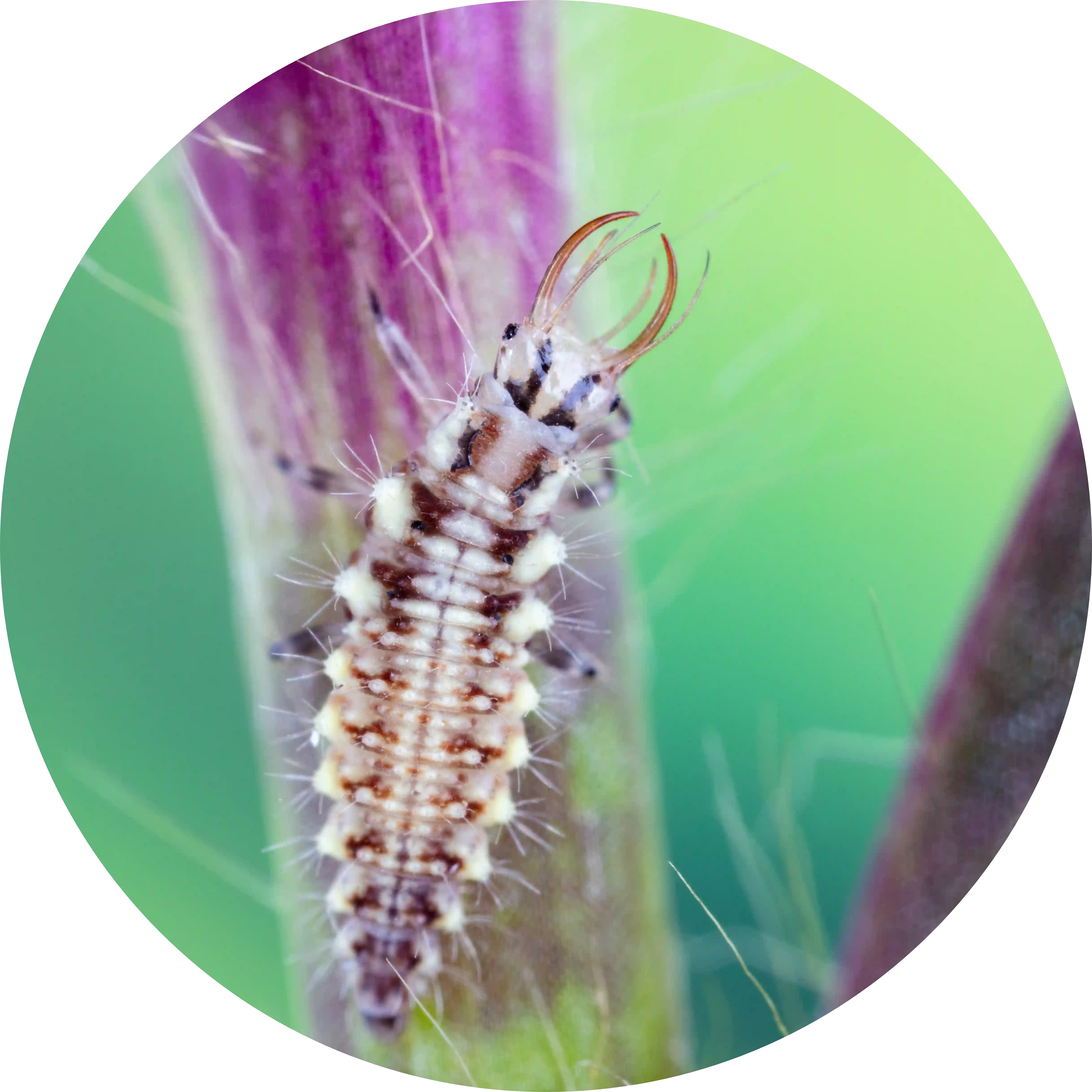


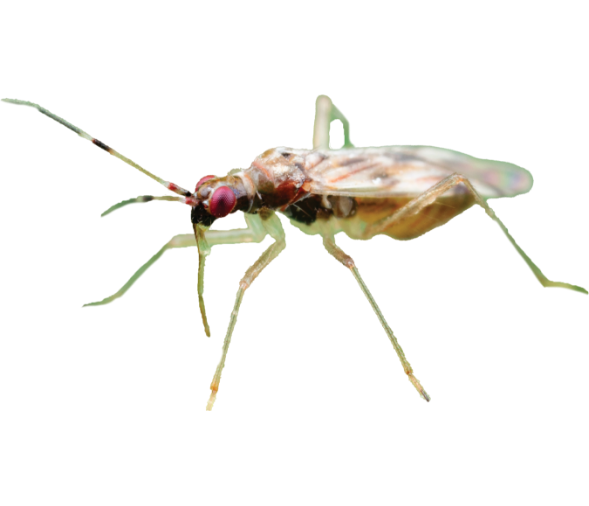

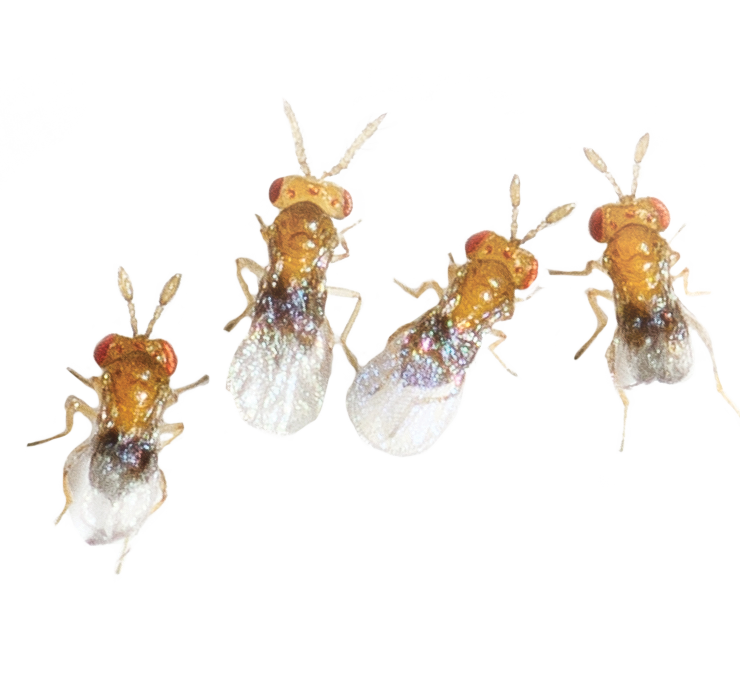
Description
Micromus variegatus, also called Brown lacewing, is a beneficial insect that demonstrates an excellent ability to predate on different species of insect pests in greenhouse crops. Both adults and larvae are generalist, primarily attacking aphids, thrips, whiteflies, mite pests and other soft-bodied invertebrates.
The adult is a pale brown insect with oval-shaped wings and long antennae. The eggs are also pale brown in color and are laid at the base of the plants. The larva has strong mandibles (mouthparts) which it uses to catch its prey.
Relatively new to the Canadian market, this biological control agent was first used in greenhouse pepper production for the control of foxglove aphid (Aulacorthum solani). Having demonstrated its great usefulness, it is now also used in the control of aphids and thrips in ornamental crops. One of the great advantages of Micromus variegatus is that it remains active at low temperatures (down to 4°C), which is certainly of interest to farmers operating winter crops in greenhouses.